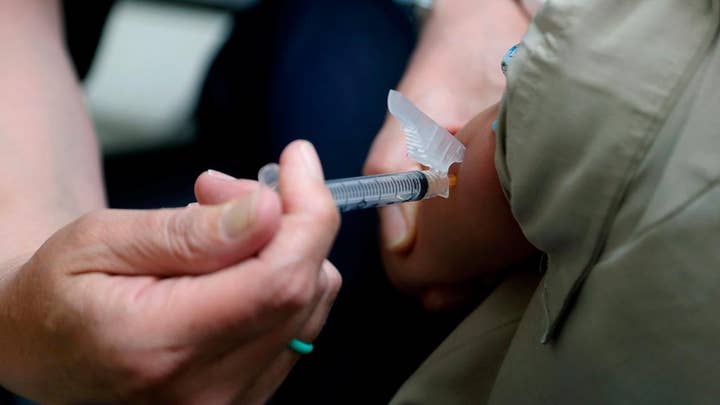How ready are we if ebola reaches the US?
Ebola deaths in the Congo exceed 1,000; Fox News medical correspondent Dr. Marc Siegel weighs in.
Every day brings stark reminders that we live in a dangerous world. The latest Ebola outbreak in the Democratic Republic of the Congo is out of control and threatens to spread throughout the region. Measles, imported to the U.S. from countries around the world, has reached levels not seen in decades. And the threat of a new global pandemic – either naturally occurring or man-made – looms on the horizon, ready to strike anywhere at any time.
In one week, the World Bank will decide how to allocate more than $50 billion in development funding to lower income countries. The World Bank should dedicate some of its International Development Association (IDA) funds – say, 5 percent, or about $1 billion per year over three years – to help countries become better prepared for infectious disease outbreaks.
The United States delegation should champion this initiative and insist on both fundings for preparedness and accountability for progress.
EBOLA OUTBREAK IN CONGO REACHES OVER 2,000 CONFIRMED CASES
Working in public health at local, national, and global levels, we’ve seen first hand the tragedy of preventable epidemics – and we’ve seen that better protection can save lives and money. Right now, the world has a narrow window of opportunity to substantially improve our protection against diseases such as measles, Ebola, and drug-resistant bacteria.
IDA financing offers exceptional value, with every $1 in partner contributions generating approximately $3 in new spending. For those who believe that the U.S. funds more than its fair share for global health, the U.S. isn’t the leading donor to IDA (the U.K. is).
After the SARS epidemic in 2003, all countries of the world agreed to improve their preparedness against disease outbreaks. But the Ebola epidemic of 2014 showed that many countries were not able to stop infectious diseases, and recent independent and objective evaluations show that most countries are still woefully underprepared.
Lack of funds for epidemic preparedness means lack of safety in the U.S. Unless lower-income countries receive substantially more resources than they have so far, the world, and therefore the U.S., will remain vulnerable, and unnecessarily so.
It is not a matter of if, but when the next disease outbreak will strike. Outbreaks are becoming more frequent and can now spread more rapidly. All of us are at greater risk than ever. Early action to contain an outbreak of Ebola, cholera or plague – or the next unknown pathogen – is the best way to protect everyone across the globe.
CLICK HERE TO GET THE FOX NEWS APP
Disease outbreaks can wipe out years of investments and severely damage development. Economic losses can dwarf the cost of response – the World Bank estimates that SARS cost the global economy $54 billion in little over half a year and that a severe flu pandemic could cost more than $3 trillion, nearly five percent of global GDP.
Because of its global reach, the World Bank is in the best position to take the lead on this critical effort, but the United States delegation has one week to make sure it does so at its annual meeting on June 17. The total needed to close preparedness gaps is estimated at about $4.5 billion annually, less than $1 per person per year. An additional $1 billion infusion each year for the next three years will provide a tremendous jump start – and is a bargain the United States cannot afford to miss.
Drs. Frieden and Hamburg are former health commissioners of New York City and, respectively, former Director of the Centers for Disease Control and Prevention and Commissioner of the Food and Drug Administration, and are members of the Commission on Strengthening America’s Health Security of the Center for Strategic and International Studies.






















